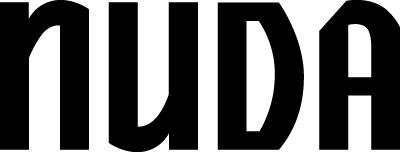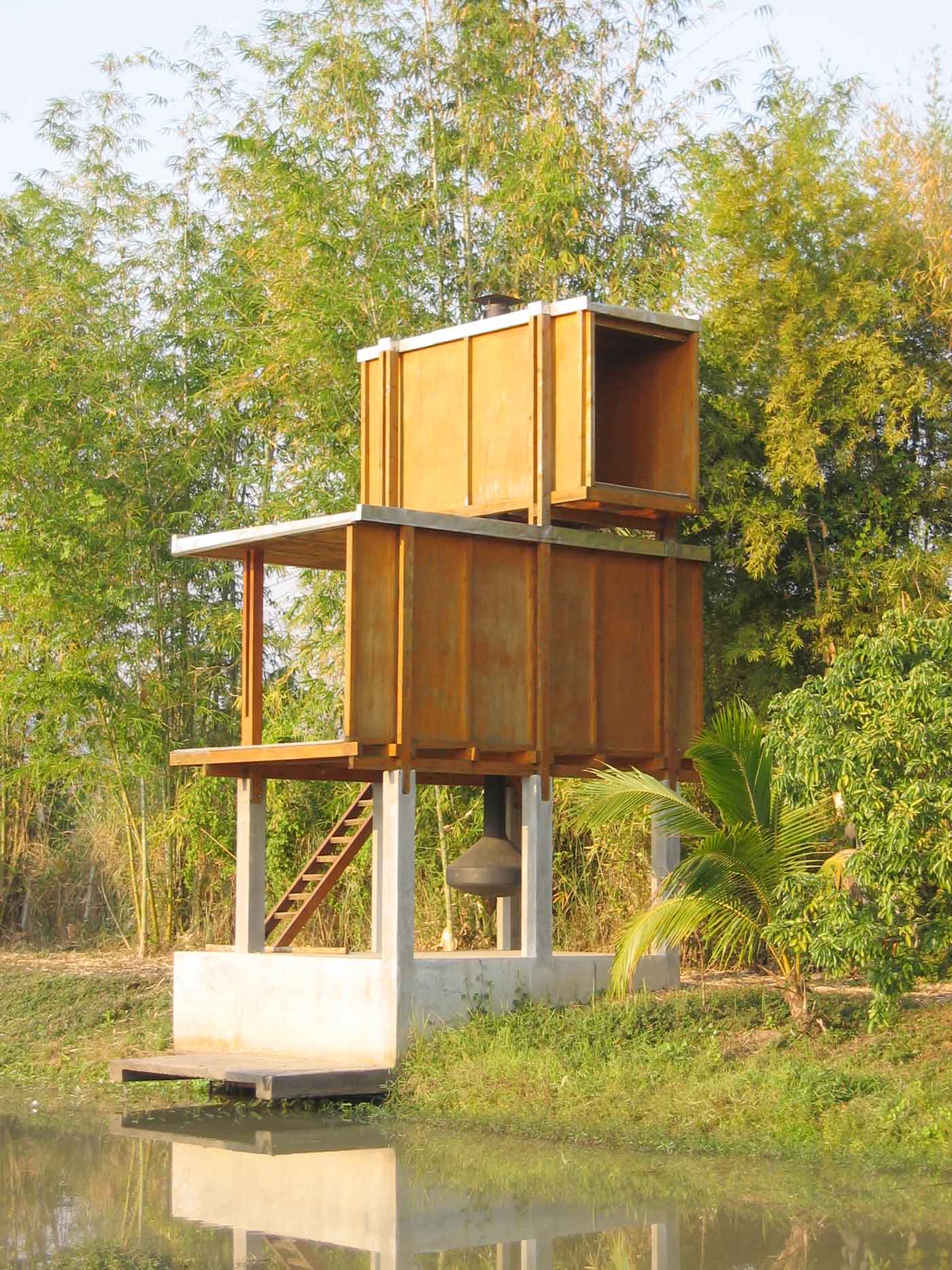To create outside of Capitalism, in conversation with Linnéa Bake
Published in Nuda:Terra
More than 20 years ago, Argentina born Thai artist Rirkrit Tiravanija cofounded the land – essentially a rice field close to Chiang Mai, Thailand; but also: a functioning farm, an architectural site, an artists’ retreat, an experiment with alternative ecological and economic models. Over two decades later, these and other descriptions of the land still sound incredibly timely, reflecting the very contemporary desire to somehow break out of capitalist cycles of production and consumption, which the art world seems in ever-inevitable ways part of.
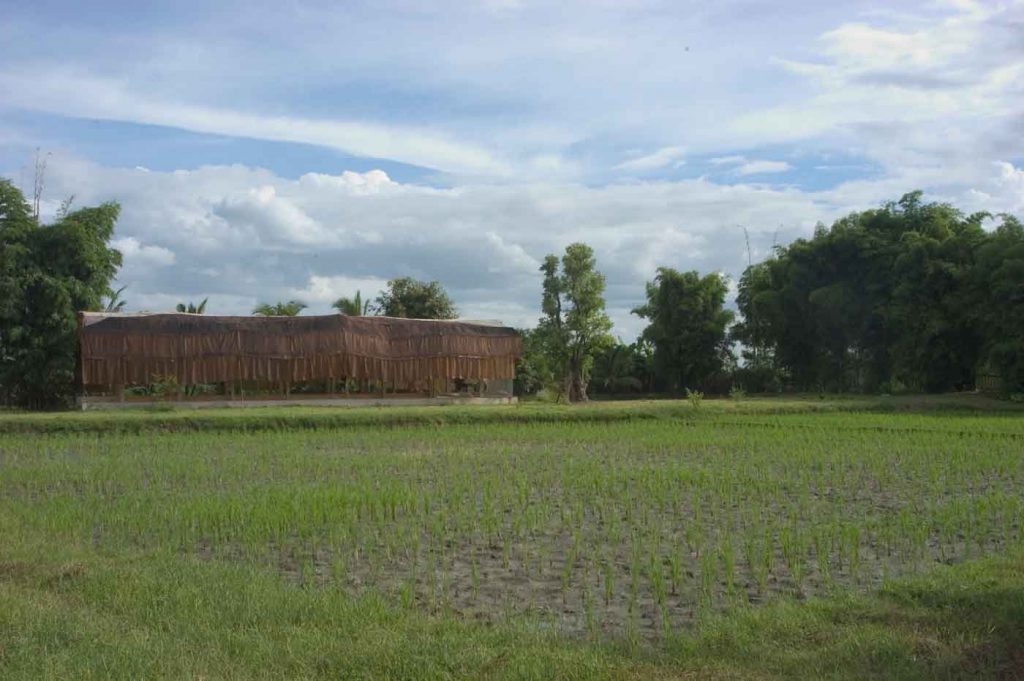
Linnéa Bake: Can you tell me a bit about the land‘s founding ideas and ideals back in 1998 when you and Kamin Lertchaiprasert initiated it?
Rirkrit Tiravanija: We started very simple really, Kamin Lertchaiprasert and I had known each other since he was in school in New York. We found each other in Chiang Mai, as he had moved from Bangkok to live there and teach at the university. At that time, with a group of friends (i.e. Philippe Parreno, Dominique González-Foerster, Pierre Huyghe, Liam Gillick,Jorge Pardo, Carsten Höller) we were discussing the possibilities of developing a safe house for artists, a place to meet or a place of rest, a pause from all the commotions of the art world… It resonated with the conversations Kamin and some of his Thai artists friends were having at the time I happened to meet him, which was around 1996-1997. A convergence of ideas. The artists in Thailand were thinking more practically, rather in terms of a retirement place for artists, than a place of respite.
In the West (Europe), we found the attempt to develop such a place very bureaucratic and would have needed institutional support etc., whereas in Chiang Mai we were able to acquire rather quickly a piece of land with rice fields, where the farmers wanted to leave the area due to irrigation and food problems. The land wasn’t productive enough for them to farm rice. So we began to develop, cultivate and activate the place without much!
Between Kamin and myself, we had different ideas and perspectives in the approach to the situation. Kamin had been studying, reading and researching in a mix of holistic and buddhistic approaches to farming and cultivation. On the other hand, the ideas of Japanese philosopher farmer Masanobu Fukuoka, and on the other a local farmer in the Northern Province (a very arid and harsh corner of Thailand), whose philosophy Kamin followed in the scaling and management of the land itself. The philosophy was to treat the land like a human body, following the ratio of water to mass, 60% being liquid and 40% mass. Under such arid conditions and scarcity, seemingly there isn’t as much possibility for growing and cultivation, but in this idea and philosophy, it is possible to create an oasis in the desert of Thailand.
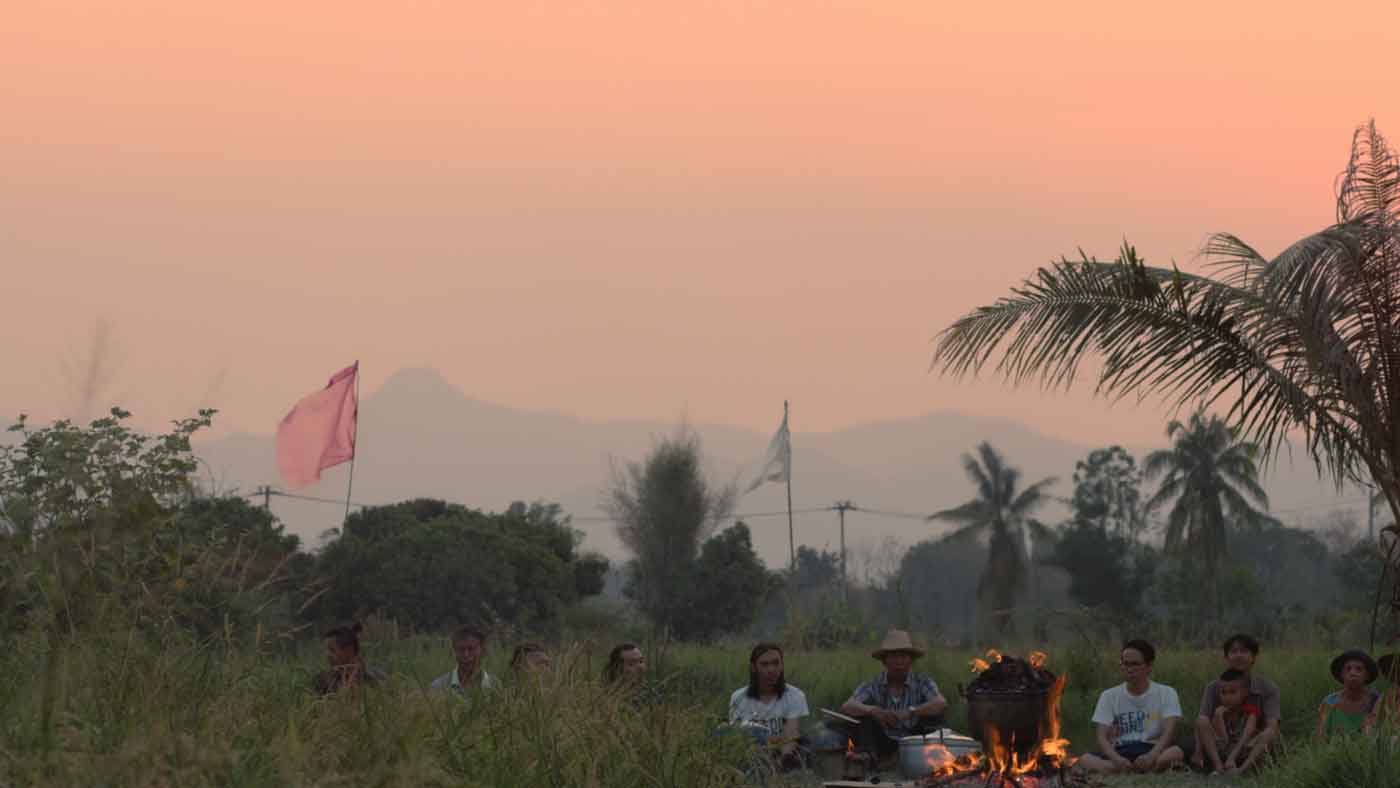


It is and was very important for us and everyone involved to understand that we are not trying to make an art project or sculpture park, we were more focused on finding an alternative way to build a commons, a place of openness, a place of sharing, a place of exchange, and a place of living. Art and different interest could intersect. It was not a stage set, but rather an attempt to create an alternative space for all of the above. We were not ambitions, it was not about visibility or a kind of projection of our thinking into our world. We were hoping for real exchange and experimentation as well as a shared experience. We had no goal, no time, no money, we barely ever raised funds or applied for grants in the years of becoming a foundation. Everyone who cared and participated had to find their own way, their own economy. There was rice in the field and fish in the water, and one could grow what one needed to sustain oneself. Friends, many of which were artists, could come and some of them each built a small structure (a house or hut or something else), at left it open for use.
Over time, younger generations of artists and interests intersected with the land itself, people came and went, some stayed. It was a station, a place of passage and transit, but always shifting and changing when interacted upon. Or just idle, with some blades of grass growing, resting and waiting for the next intersection of a meeting.
We are not trying to make an art project or sculpture park
LB: One of the founding principles was non-ownership, the proposal that the land is there for anyone to be used. Again, this idea of collectivity is one that I encounter a lot in conversations amongst my peers right now – an aspiration, a dream, oftentimes along with the realization that collectivity comes with shared responsibilities. Of course, collective ownership is not the same as rejecting the idea of ownership altogether. In the land, how was (and is) this principle of non-ownership put into practice?
RT: Between Kamin and myself, from onset we knew that the land as a place would not become a property, and that is has no estate value. If one should need to make such a measurement, it would have to be only about its usefulness. However, in that situation, we needed to deal with the real world and its set of rules and regulations. Even without ownership, it still needed a name on the deed, and as we tried to find a proper and legal way to free up the place from the property, we found that by Thai laws, a foundation was the best way to neutralize such a place. So we became the land foundation. In fact the land (no caps, all in lower cases) in its translation from Thai really means rice field, or rather: a place for cultivation, and we felt that for this sensibility to be authentic, such a word for such a place should have no capitals.
Again, we are interested in the commons and not the commune, as in communes, things tend to become too much about property and hierarchy, too much structure. We were interested in no place, which has no limitations – as much as possible.
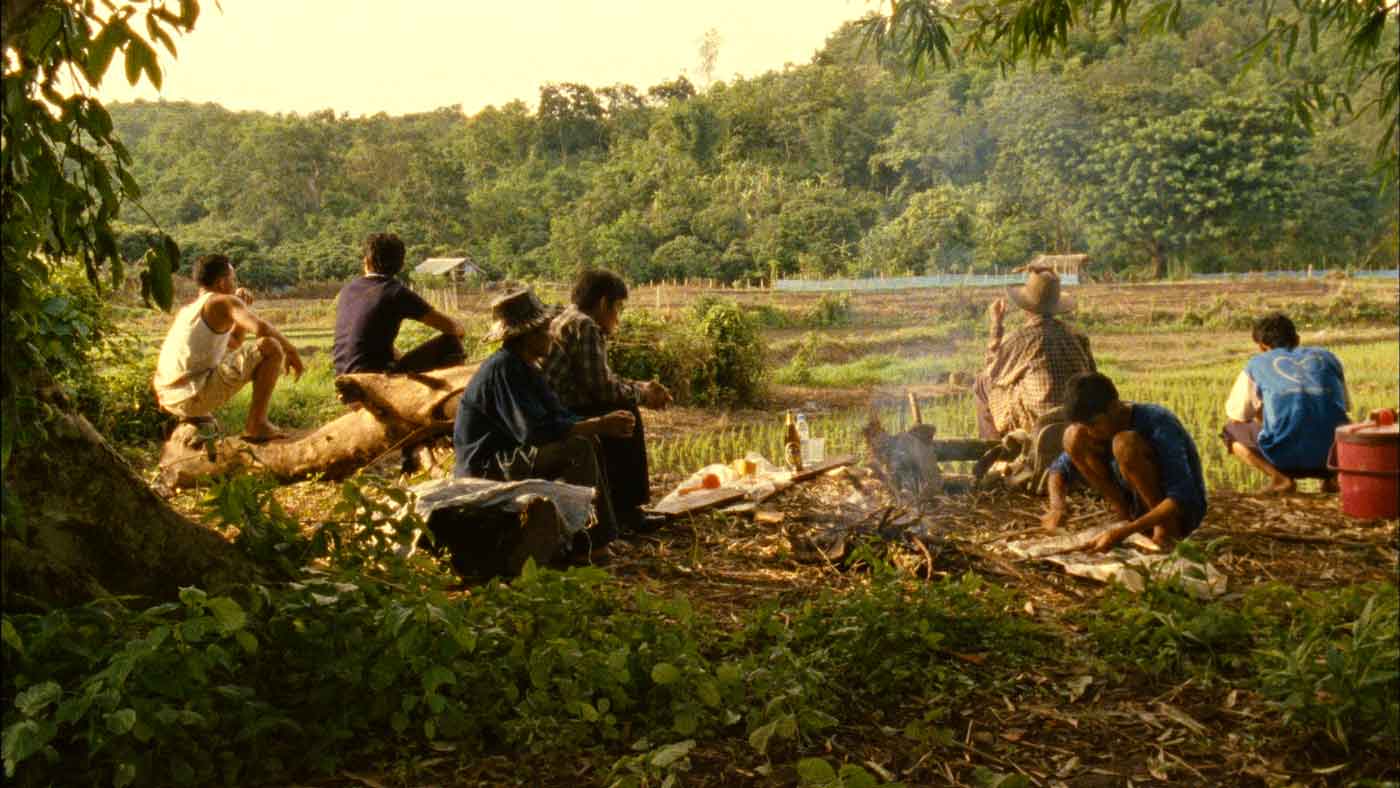
LB: “There is not a time limitation to the cultivation of the land”, it says on the project’s homepage – a platform which, as one of the only traces of the land outside of the physical space it inhabits, itself seems kind of stuck in time (the last blog post encounter, if I was to stop by at 48 Moo 1, T. Banmae, A Sanpathong, Chiang Mai (the address listed on the website) today?
RT: Well, there is out foundation manager who is there daily, his name is Dong, and he is there to overlock and maintain the land itself and keep the lines of communication open. Our gardener Lung Taá retired and we have been looking for a replacement, but at the moment that is an open position. We have foundation meeting and many people involved are working depending on their different interests from farming to political activation (as we should be aware of the political situation ongoing in Thailand). This past winter we did an event with the New Museum’s IdeasCity initiative. As a part of their survey of alternative communities in the part of the world, we had a solar kitchen cooking event with guests from the local community.
I can’t say what is going on a daily basis, but people find their way there. We have been developing with a couple of architect friends, Nikolaus Hirsch and Michel Müller from Frankfurt, to build a larger infrastructural building for our residency occasions. Although we have not pulled together to make the one-year residency happen in the recent years, we hope that with the new building, we will be able to create accommodations and spaces necessary to develop future prospects.
the land as a place would not become a property, and is has no estate value
LB: For a while, a lot of prolific artists’ name popped up around the land – including Philippe Parreno, Tobias Rehberger, Superflex, and of course yourself and co-founder Kamin Lertchaiprasert – along with those of critics and curators such as Daniel Birnbaum and Hans Ulrich Obrist, creating and reproducing a discursive space around the project, which, as one could argue, outgrew the reality of the land‘s physical manifestation.
For me, it has been interesting to self-critically observe how the current absence of this kind of buzz, in addition to encountering an outdated web page, quickly led me to assume that the project must be finished, not happening anymore. But in a way, this assumption just underlines once again the outcome-driver character of the art world and associated fields. Even if we nowadays like to label a practice as “socially engaged”, we then tend to judge it by the same set of values, by the same parameters of “success”. Thoughts?
RT: Well, yes, people and projects seems to be very much driven by the need to be visible, and that visibility serves self-aggrandizement, and of course survival (funding, grants etc.). the land doesn’t operate under those pretenses – as I have earlier stated, we are a living place, and as it lives it is actively inactive. Seasons come and go and with the shift in time, different possibilities are coming and going. We don’t have a program, we don’t have a schedule, we don’t have a plan and we don’t have an economy which consumes our existence. We live and breathe like a mango tree, some years more fruitful, some years less. the land was started in the late 90s, it’s now 2020, and it will continue to be there at the will of all that have passed by, all those that have left it behind and all that will come to be in touch, in their own time.
We live and breathe like a mango tree, some years more fruitful, some years less
LB: This leads me to the (inevitable) question about Relational Aesthetics, Nicolas Bourriaud’s acclaimed definition of art as a set of social relations, and your assigned role in this discourse since its inception. I’ve had the pleasure to work with your archive, browsing through photographs from the 90s, of Pad Thai served in NewYork gallery spaces turned inside out. I love those photos, because they convey, with such sincerity, the conviction that art can use these “sets of social relations” to oppose the alienating logics of capitalist systems. Of course I realize that, from my detached point of view, I am romanticizing this time–retrospectively, it’s like looking at an unfulfilled utopia. The difficult nature of evaluating human relationships as an artistic medium has become all too apparent in many ways since.What are your feelings thinking back to those times, the convictions that you had and that drove your work? How are they still reflected in your practice?
RT: We will not find utopia when we keep looking for it outside of ourselves, it can only be made from the inside outwards. We are at a turning point in the world, where fear has overtaken openness, where the illusions of connectivity have become a mirage of likes and hashtags. There is still a long way to go before difference and otherness is understood as it is within. I continue to search for and find possibilities for openness and critical engagement.
We are at a turning point in the world, where fear has overtaken openness, where the illusions of connectivity have become a mirage of likes and hashtags
LB: Utopia is a term that is and has frequently been used in descriptions of your work. The term as such describes a non-place, which in a way implies its own impossibility – reflecting on the land, what would you say are or were the project’s failures? Its in-built impossibilities?
RT: It seems to me that one would like to be able to measure everything, but I am not interested in those kind of scales. If one can accept all that is possible, then nothing is impossible, and if nothing is impossible, then there isn’t a possibility to see failure. I see utopia in chaos, in the vibrations when differences are at work – it is trembling, crumbling and regenerating. In that sense, a “non-place” is possible. Impossibilities are not failures, they’re just time and space we cannot measure.
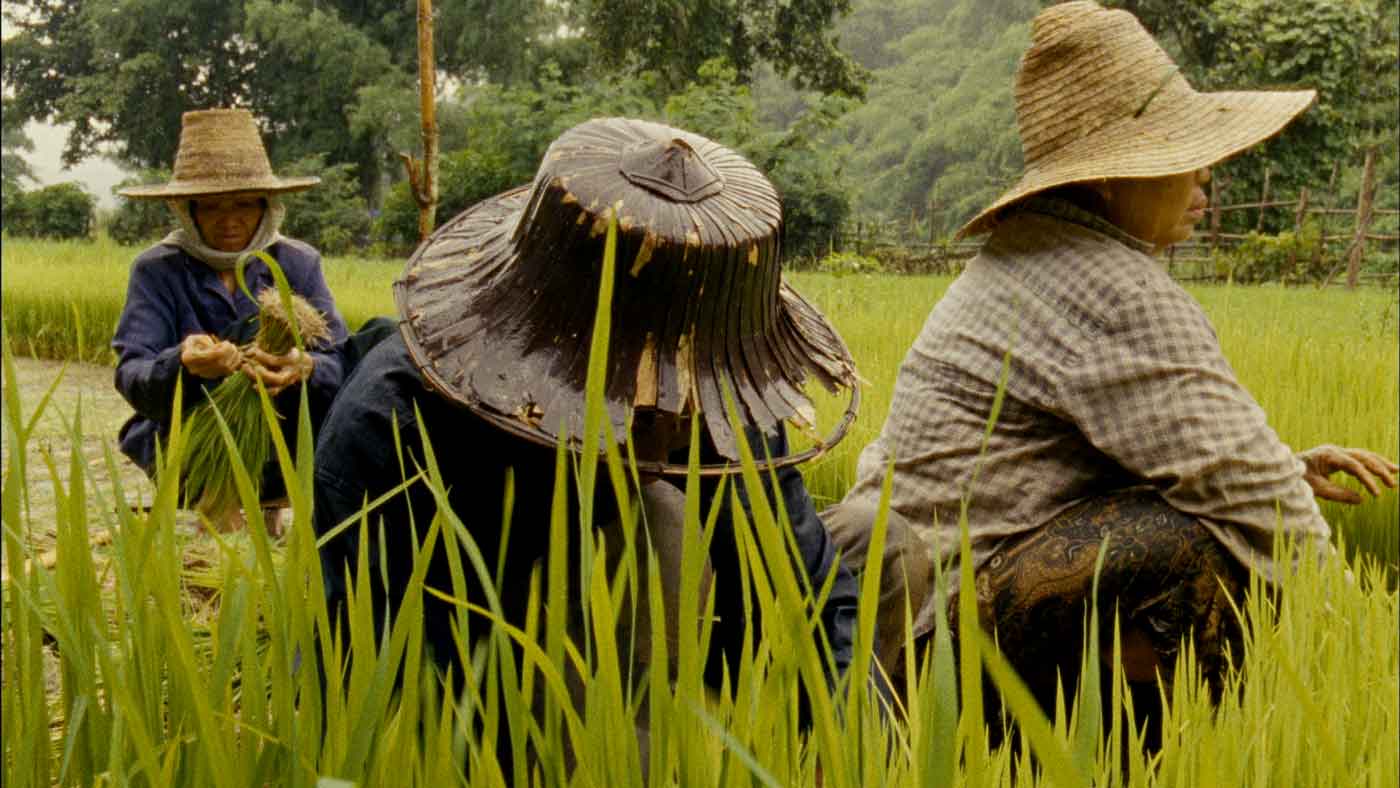

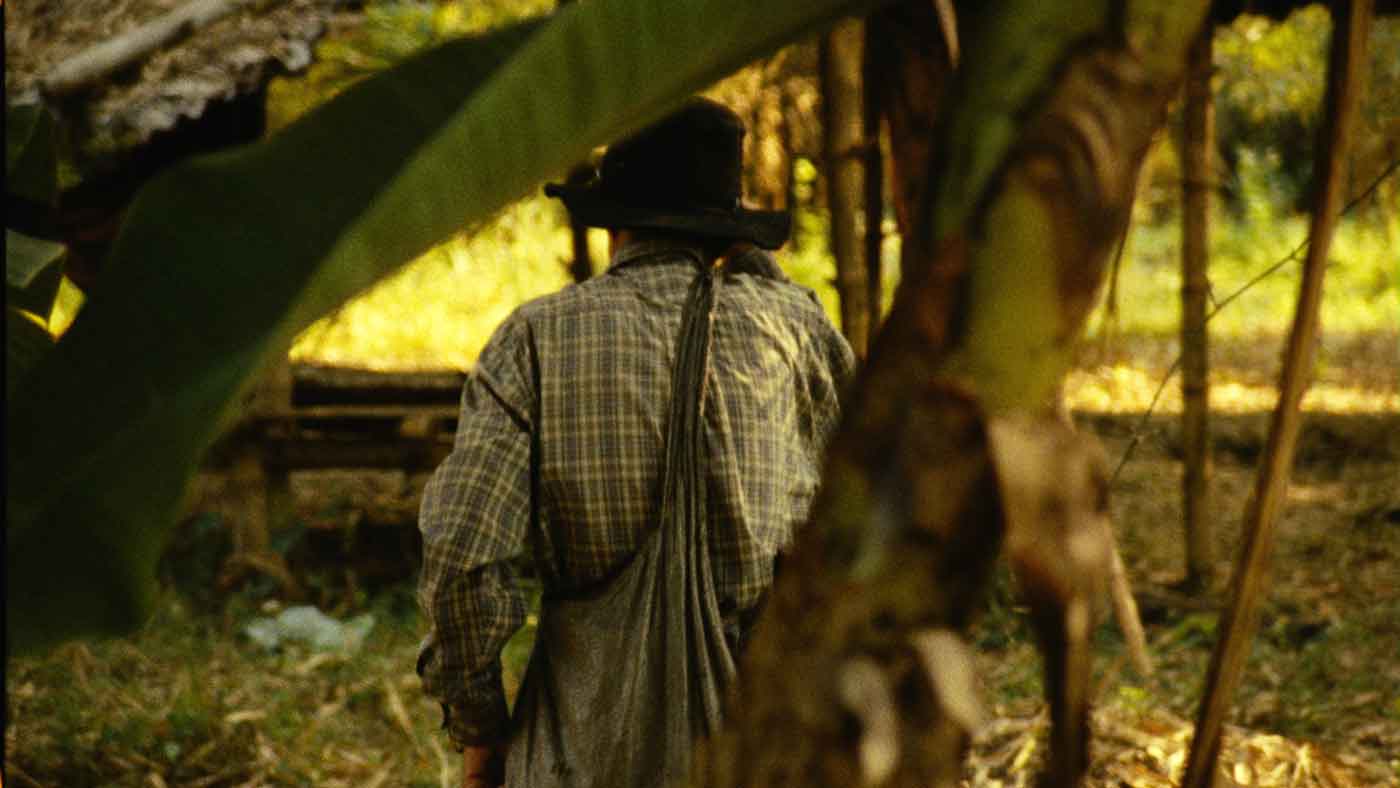
LB: Since the land was founded, political, economical and technological developments have fuelled a globalization of culture and an increasing internationalization of the art world, which has opened up a critical field in regards to site-specificity and locational identity. From eraly on, you have been used as an example to illustrate a tendency in contemporary art labeled artistic nomadism, which simultaneously implies a globalized reception and an increasingly mobile audience. Authors such as Miwon Kwon have argued that while site-specificity might once have been a means to better integrate art into the spaces of the everyday and to engage or accommodate (local) publics, it is in fact oftentimes overrunning the meaningfulness of local places and cultures. Kwon writes: “Site-specificity was really more like the imposition of a kind of disembodied museum zone onto what already had been very meaningful and present before that, which was the place”. I’ve been thinking of this statement a lot, in relation to countless contemporary examples, but also in terms of the local meaningfulness of a project such as the land. From your point of view, which role has the project’s situatedness in Northern Thailand, its site-specificity, played?
RT: While people who are interested in art are involved in the land, it isn’t all specific to art, and therefore it isn’t a site. It is where it is because people who are involved are generally living in the area, and I think in many ways it isn’t at all interested in being disembodied from its location. There is no demand for contextualization, and the land has no non-site existence outside of its locality.
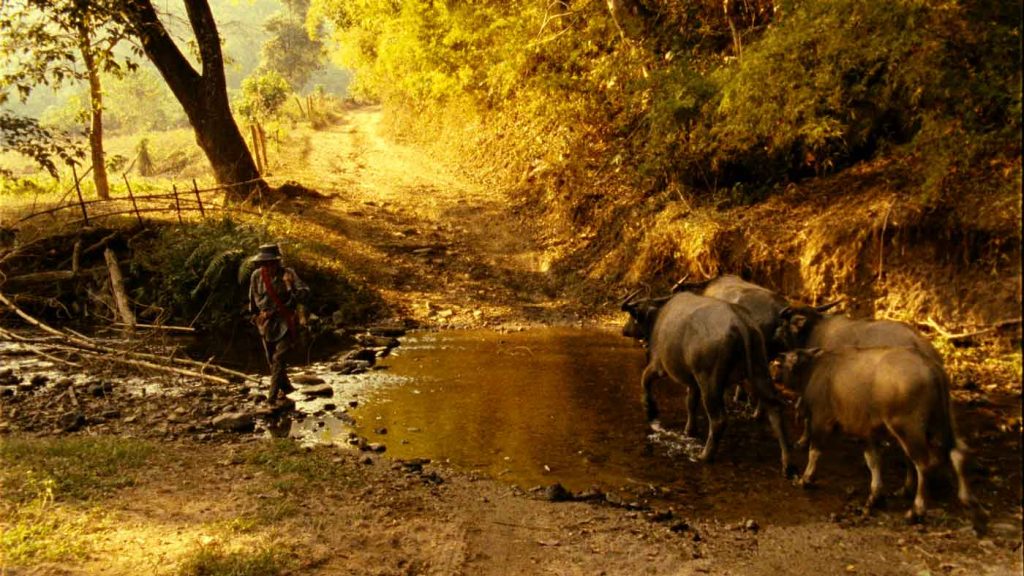
LB: the land has been criticised for its failure to function, both on the basis of structural sustainability as well as in various technical aspects–from the degeneration of some of its buildings to Superflex’ ultimately unrealized attempt to make gas for cooking from buffalo manure. However, I’m wondering whether this criticism–focused on functionality and efficacy–actually contradicts the basic principles of the project itself, the idea of an experiment as such? What responsibility does one take in trying things out?
RT: It’s really funny to think that one finds the need to criticize such a non-place? The failure to understand its existence outside of the sphere of art is the fundamental problem with such an idea. We, and everybody involved, see success and failure in their own terms, but if one lives in a white cube and can only measure existence there in that cube, then life outside of that cube fails if it doesn’t serve the expectations within that cube. It’s absurd, we are not playing some kind of an art farm here, it’s not the lightning fields, or Marfa, for that matter. It is the problem of Western-centric thinking to measure life in those terms. It’s prejudice to the point of racism, and I think such concerns need to reflect on their own perspective of life.
One of the misunderstandings here is that those in the West, whose criticism of such a place i assume we are talking about, have never themselves been to the land itself. and in the case of those who came and did not find the land to be of their expectations (and I personally know one such person), I think in their criticism lies the problem of their own failure to grasp the difference between life and (what they think) is art itself. the land isn’t a project, its existence lies beyond the comprehension of its failures. Like I said, the mango tree has its fruitful years and less fruitful years, I don’t think it’s about functionality. And we don’t use chemicals from the West to cultivate our trees.
if one lives in a white cube and can only measure existence there in that cube, then life outside of that cube fails if it doesn’t serve the expectations within that cube
LB: You once said (in a 2012 interview with Raimar Stange) about the land: “It is a landscape upon which to act, a surface on which to build models and a table around which to meet. But it is only those things when there is a need and a will for such interaction […] It is the desire of many, but most of the time it is only a possibility. It is that many imagine it to be–beyond what it actually is.” This tension between the fictionalization of the place and its actual reality has been used by critical voices to emphasize the boundaries that this kind of affirmative relational work can meet within politically precarious contexts. On the other hand, the way I understand you in the above quoted statement, the land aimed to foster visions of how things could be, and to consciously utilize such fictional forms to promote social, political and mental change. In this regard, as I’ve initially remarked, a project like the land still speaks to me as a potential – even if probably in other, updated forms: ecofeminism, decolonial practices, climate justice, self-governance, land autonomy, human as well as more-than-human relationships… So, as a last question to you: I’m wondering if you have future visions, new aspirations for the land?
RT: For both Kamin and myself, the hope is that the younger people who have been involved with the land from the very beginning might carry it onwards into the future. I personally will continue to be involved and use it – as i mentioned we are waiting to build a larger structure, with more accommodating facilities. I mean, it’s still camping, but perhaps with a better infrastructure. And again, I have to underline that the land is just the land, it isn’t trying to be or accomplish any status outside of itself. Again, it isn’t about art, and I’m not interested in making it into art. It seems impossible for many to comprehend that not everything is art. Personally, there are other lands that I am interested in.
for this sensibility to be authentic, such a word for such a place should have no capitals

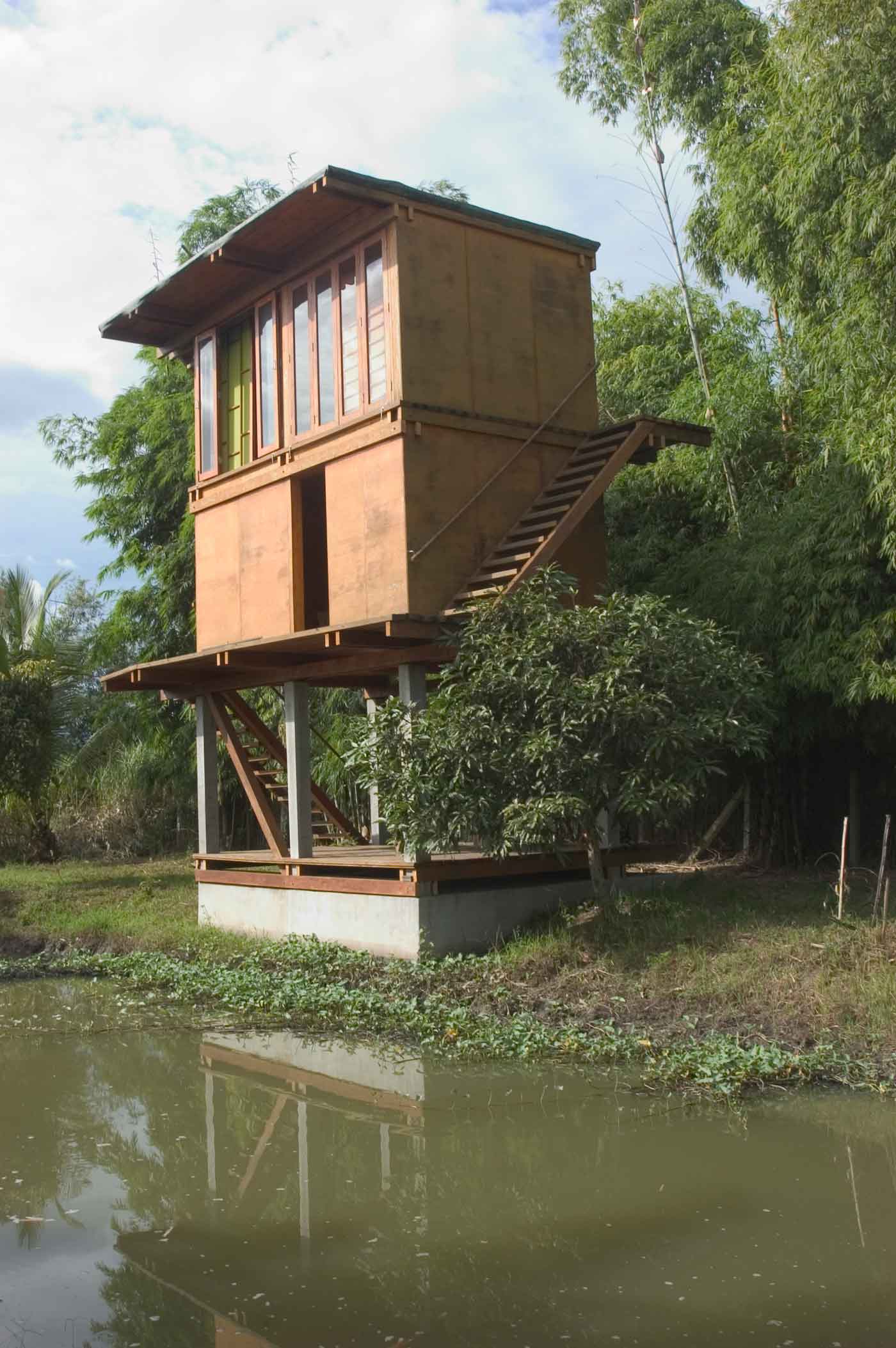
Born in 1961 in Argentina, Rirkrit Tiravanija is a Thai artist whose experiential and participatory practice has continuously challenged the autonomy of the art object, undermining art and its (Western) institutional spaces in unpredicted, influential (and utopian) ways since the early 1990s. While Tiravanija’s diverse and at times ephemeral artistic production escapes classification, the descriptions of his works are notoriously linked to the discourse around Relational Aesthetics, a term famously coined by Nicholas Bourriaud in 1998.
Subverting the deeply-ingrained ways of interacting with art, his practice oftentimes constructs collaborative and communal environments, inviting viewers to inhabit and activate his work in various ways: by sharing meals (untitled 1990 (pad thai)) or making themselves at home in a full-scale replica of Tiravanija’s apartment (untitled 1996 (tomorrow is another day)), only to name a few. Having since gained international recognition through major exhibitions in art institutions world wide as well as being recognized with numerous awards and grants, Tiravanija’s long-standing practice holds an iconic status amongst artists of younger generations.
Tiravanija lives and works between Chiang Mai, New York and Berlin, where his most recent work is currently installed on the facade of the infamous techno club Berghain–a declaration of both uncertainty and hope, the monumental banner reads: MORGEN IST DIE FRAGE (“Tomorrow is the question”).
| Photography, the neighbours | Lung Neaw |
| Interview | Linnéa Bake |
